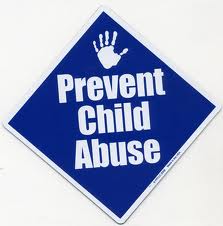Any concerned citizen who suspects that a child is being harmed can (and should) report their suspicions to their local child protective services agency or police department. Childhelp® National Child Abuse Hotline (1.800.4.A.CHILD oor 1.800.422.4453) is another resource.
Please remember that these are warning signs (from Administration for Children and Families) and discovering one sign in a child or family does not mean that abuse is happening. Visit Child Information Gateway for more information.
The Child:
- Shows sudden changes in behavior or school performance
- Has not received help for physical or medical problems brought to the parents’ attention
- Has learning problems (or difficulty concentrating) that cannot be attributed to specific physical or psychological causes
- Is always watchful, as though preparing for something bad to happen
- Lacks adult supervision
- Is overly compliant, passive, or withdrawn
- Comes to school or other activities early, stays late, and does not want to go home
The Parent:
- Shows little concern for the child
- Denies the existence of—or blames the child for—the child’s problems in school or at home
- Asks teachers or other caregivers to use harsh physical discipline if the child misbehaves
- Sees the child as entirely bad, worthless, or burdensome
- Demands a level of physical or academic performance the child cannot achieve
- Looks primarily to the child for care, attention, and satisfaction of emotional needs
The Parent and Child:
- Rarely touch or look at each other
- Consider their relationship entirely negative
- State that they do not like each other
Types of Abuse
The following are some signs often associated with particular types of child abuse and neglect: physical abuse, neglect, sexual abuse, and emotional abuse. It is important to note, however, that these types of abuse are more typically found in combination than alone. A physically abused child, for example, is often emotionally abused as well, and a sexually abused child also may be neglected.
Signs of Physical Abuse
Consider the possibility of physical abuse when the child:
- Has unexplained burns, bites, bruises, broken bones, or black eyes
- Has fading bruises or other marks noticeable after an absence from school
- Seems frightened of the parents and protests or cries when it is time to go home
- Shrinks at the approach of adults
- Reports injury by a parent or another adult caregiver
Consider the possibility of physical abuse when the parent or other adult caregiver:
- Offers conflicting, unconvincing, or no explanation for the child’s injury
- Describes the child as “evil,” or in some other very negative way
- Uses harsh physical discipline with the child
- Has a history of abuse as a child
Signs of Neglect
Consider the possibility of neglect when the child:
- Is frequently absent from school
- Begs or steals food or money
- Lacks needed medical or dental care, immunizations, or glasses
- Is consistently dirty and has severe body odor
- Lacks sufficient clothing for the weather
- Abuses alcohol or other drugs
- States that there is no one at home to provide care
Consider the possibility of neglect when the parent or other adult caregiver:
- Appears to be indifferent to the child
- Seems apathetic or depressed
- Behaves irrationally or in a bizarre manner
- Is abusing alcohol or other drugs
Signs of Sexual Abuse
Consider the possibility of sexual abuse when the child:
- Has difficulty walking or sitting
- Suddenly refuses to change for gym or to participate in physical activities
- Reports nightmares or bedwetting
- Experiences a sudden change in appetite
- Demonstrates bizarre, sophisticated, or unusual sexual knowledge or behavior
- Becomes pregnant or contracts a venereal disease, particularly if under age 14
- Runs away
- Reports sexual abuse by a parent or another adult caregiver
Consider the possibility of sexual abuse when the parent or other adult caregiver:
- Is unduly protective of the child or severely limits the child’s contact with other children, especially of the opposite sex
- Is secretive and isolated
- Is jealous or controlling with family members
Signs of Emotional Maltreatment
Consider the possibility of emotional maltreatment when the child:
- Shows extremes in behavior, such as overly compliant or demanding behavior, extreme passivity, or aggression
- Is either inappropriately adult (parenting other children, for example) or inappropriately infantile (frequently rocking or head-banging, for example)
- Is delayed in physical or emotional development
- Has attempted suicide
- Reports a lack of attachment to the parent
Consider the possibility of emotional maltreatment when the parent or other adult caregiver:
- Constantly blames, belittles, or berates the child
- Is unconcerned about the child and refuses to consider offers of help for the child’s problems
- Overtly rejects the child
Related Post: You Can Help Prevent Child Abuse
Nicki Sanders, MSW, Chief Visionary Officer
The Teen Toolbox utilizes youth portfolio development and civic engagement and academic empowerment strategies to help teens set goals for life after high school and create a road map to reach those goals through its PACKAGED FOR SUCCESS™ Programs. We are committed to supporting and raising awareness about the needs and potential of teenagers in the foster care system.
© Copyright Protected. ALL RIGHTS ARE RESERVED.
